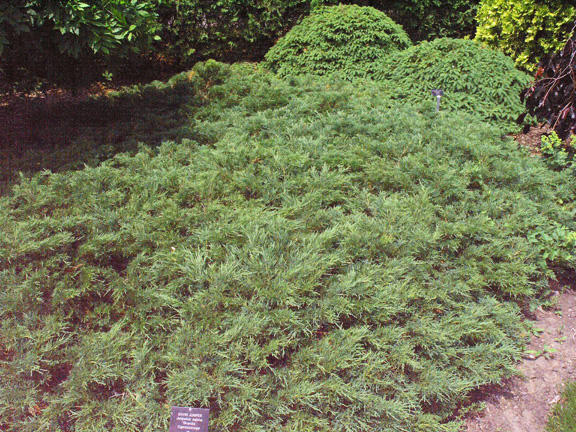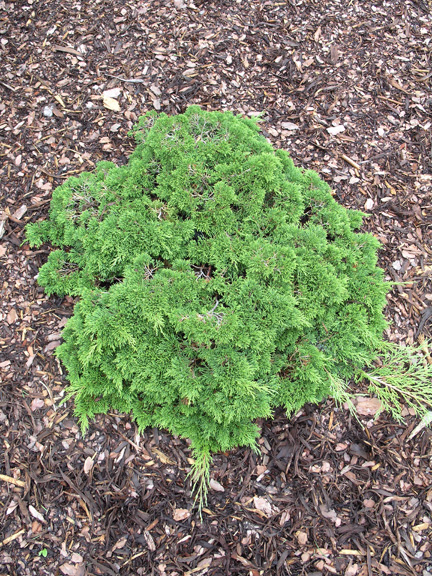
Woody > Juniperus > Juniperus sabina > Juniperus sabina
Juniperus sabina
Savin Juniper
Origin: Southern Europe, West Asia and Siberia.
Mike's
Opinion


"
Ideal evergreen to add depth in a garden plot year round, virtually maintenance free since it seldom requires pruning. Be wary of birds flying into your window after consuming large quantities of the poisonous berries.
Michael Pascoe, NDP., ODH., CLT., MSc. (Plant Conservation)
"
| Family |
| Cupressaceae |
| Genus |
| Juniperus |
| Species |
| sabina |
| Category |
| Woody |
| Type |
| Shrub (evergreen) |
| Pronunciation |
| USDA Hardiness Zone |
| 3-7 |
| Canadian Hardiness Zone |
| 3-9 |
| RHS Hardiness Zone |
| H7 |
| Temperature (°C) |
| -34ºC - (- 40ºC) |
| Temperature (°F) |
| -30ºF - (- 40ºF) |
| Height |
| 1.2 -4 m |
| Spread |
| 1.5 -6 m |
Photographs
Description and Growing Information
Flowering Period
| General Description |
| A large wide spreading ground cover that is underused and tolerates the urban environment quite well. An ornamental specimen that offers a variety of ways in which it can be applied to a landscape setting. |
| Landscape |
| Accent specimen, topiary, hedge, border or mass planting are acceptable uses. |
| Cultivation |
| Provide an area with complete sun exposure to prevent spindly and loose foliage. Water 2.5 cm per week and stop watering in August. A rocky or sandy loam soil that is well drained is preferred, but this species also tolerates most soil types. |
| Shape |
| Stiff vase shape, low growing shrub with a rounded form. |
| Growth |
| Slow |
| ID Characteristic |
| There is variability among the species cultivars are often preferred over Savin Juniper because of their superior foliage characteristics. Despite its poor appearance it does well in hot, sunny and open conditions. Pungent oil is emitted when leaves are crushed. |
| Pests |
| Juniper tip blight, bag worm, mealy bugs, midges, Red Cedar Bark Beetle, web worms, White Juniper Scale, Cedar Quince Rust. Remove and burn infected branches to prevent further plant deterioration. |
| Habitat |
| Mountains of Southern Europe. |
| Bark/Stem Description |
| Reddish brown mature bark, juvenile bark is deep green; medium in texture. |
| Leaf Description |
| Juvenile scale-like leaves appear in pairs, overlapping, opposite one another on a branch. The branches are sharply foliaged at maturity as a defence against potential predators. |
| Flower Description |
| A very unnoticeable flower occurs in late March to April. |
| Fruit Description |
| This dioecious plant produces small circular cones that ripen in autumn. |
| Colour Description |
| Dark green colouring all summer long, displays a dingy yellow appearance in the winter months: not purple. |
| Texture Description |
| Slight abrasions on the skin may occur from constant contact with the foliage of this plant. It is advised to wear a long-sleeved shirt while performing any maintenance tasks on Junipers. Medium texture. |
| Propagation |
| From seedling or branch cutting of ripe wood in the spring or autumn season. Balled and burlap and container-grown specimens provide adequate stock for the limited demand of this plant in the landscape. |

